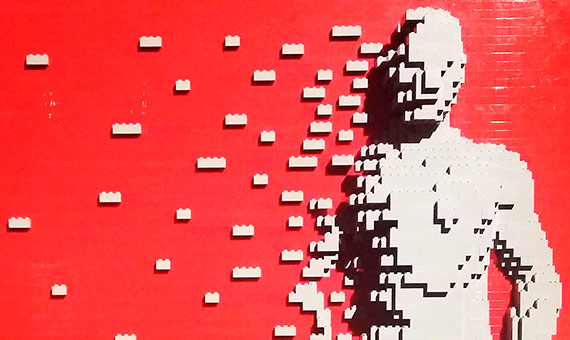The future of a life without a past
Synthetic biology proposes building new biological entities or modifying existing organisms based on the rational design principles used in engineering. Those who practice it promise a new happy world where factories of synthetic microbes, domesticated from their genetic entrails, will end the great energetic and health evils that threaten the survival of our species. The conquest of this new science fiction scene demands, according to the bioengineering vision, freeing itself from evolution. In the post-Darwinian era, bio-artefacts will be built again, liberated from the “unnecessary detritus” accumulated throughout evolution, and biodiversity will not result from selective pressures but from rational designs guided by industrial imperatives.

However, science fiction, unlike fantasy, is not concerned with predicting the future, but places itself in it to analyze issues of the past and present. In the same way, the promises of the future of synthetic biology only make sense if this is built from reflecting on the past and present which have to beget it. In particular, we wonder about the relationship that synthetic biology establishes between the evolutionary past, present and future of biological artefacts. Is the rupture with the past advocated by synthetic biology truly possible or, on the contrary, will the disdain for evolution turn science fiction into fantasy?
Engineering to “simplify” life
Microbial artifacts imagined by synthetic biology, hybrids between machines and living beings are often characterized as modular entities, computable and fruit of engineering design. First and foremost, bioengineers aim to reduce the characteristic complexity of living systems in order to facilitate the construction of bio-artifacts. It is intended, therefore, that synthetic parts behave as the parts of a layman; that is to say, that they are interchangeable, functionally discreet and recombinant. Synthetic ‘parts’ are also conceived as genetic modules that encode information, reducing the cellular machinery to a mere receptacle that can accommodate any genetic artifact and produce products in a predictable way. Finally, synthetic biology is inspired by a radically adaptive interpretation of evolutionary theory: if natural selection has been the natural programmer of evolution until now, synthetic biology promises that, in the future, biological software designers will be able to reprogram organisms at will.

Creative art vs. rational design in bioengineering
However, contemporary biology has substantially refuted all these assumptions. Cell biology has shown that, unlike parts assembled in mechanical engineering, organic building blocks are intrinsically interactive subjects, so that both their identity and behavior are determined by such interactions. It is unsurprising, therefore, that most bioparts do not show the same activity in different assemblies, as their behavior will depend on the network in which they are inserted. Biological modularity has, in turn, radical consequences for the evolutionary process. Throughout evolution, the parts that were originally selected to perform certain functions have been reused to adapt to new ecological contexts. In this respect, evolution looks more like ‘tinkering’ or creative art than rational design of predictable properties.

What’s more, modularity itself is a property subject to evolution; even if it were possible to introduce a new functional module into an organism, synthetic organisms could evolve into organized entities in a radically different and unpredictable way. Likewise, evolutionary biology has shown that, far from being a mere hindrance to the past, complexity is an essential property for the survival and evolution of organisms. Thanks to the ability of organisms to reorganize when faced with genetic or environmental disturbances, organisms accumulate latent ontogenetic pathways that can be reused in different contexts. Hence synthetic cells perish or survive only in extremely favorable laboratory conditions. And many of the genes which apparently have no function, could be involved in alternative metabolic pathways that would operate in the face of environmental or genetic disturbances. In fact, if minimal genomes are devoid of latent alternatives that they can recycle to adapt to new environmental conditions, they will hardly be able to survive the future.
The ingenuity of biological evolution
Finally, in light of neo-Darwinian confidence in the possibility that every form will be shaped by adaptive needs, evolutionary biology has shown that the manipulation of living beings is not only limited by our imagination. The fantasy of bioengineers must consider the historical burden and material constraints that explain what organisms are like and how they can be. At the same time, no engineering that operates with living things can free itself from evolution. ‘Minimal’ cells do not represent frozen stages of the origin of life that can re-inaugurate organic history, but are, like all other organisms, the fruit of their evolutionary history.
In conclusion, the synthetic manipulation of living beings is based on a conception of the living that has been deeply questioned by contemporary biology. The future of life, in short, necessarily depends on the actuality of a biological organization that can only be understood in light of the past that has generated it.
Laura Nuño de la Rosa
University of the Basque Country
Comments on this publication